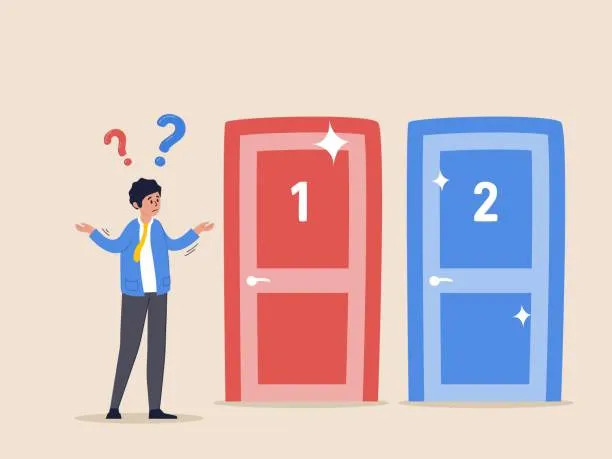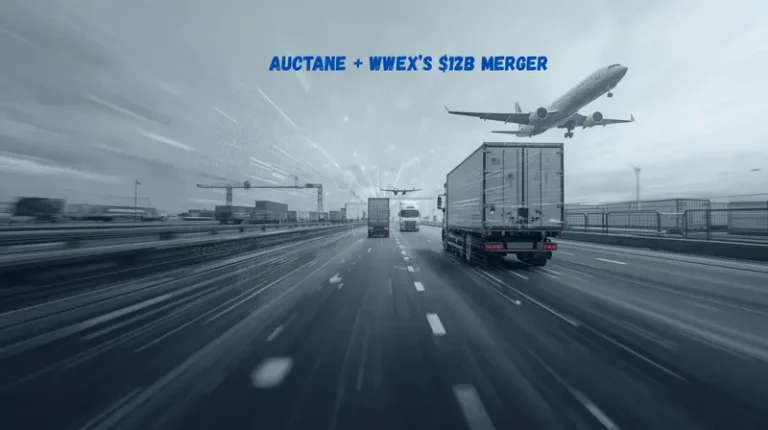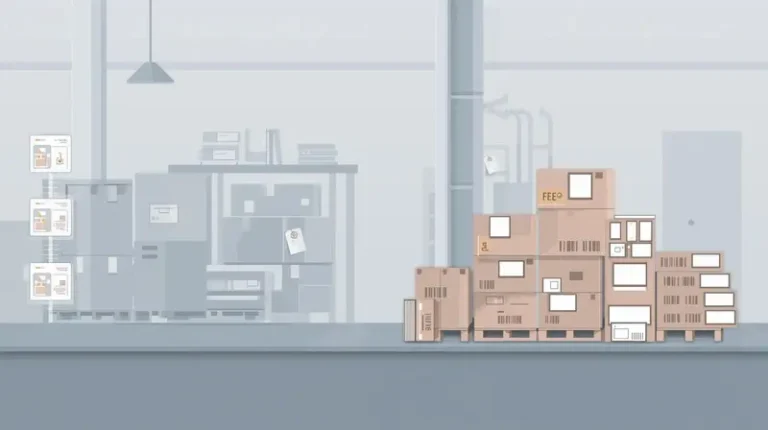3PL vs 4PL: What’s the Difference and Which Is Right for Your Brand?

Last updated on July 28, 2025

In this article
 11 minutes
11 minutes
- Why This Question Matters More Than Ever
- Understanding First-Party Logistics
- What Is a 3PL?
- What Is a 4PL?
- Core Competencies: What Should You Keep In-House?
- The Key Differences Between 3PL and 4PL
- Supply Chain Agility: Why It Matters
- When to Use a 3PL
- When to Consider a 4PL
- The Overlooked Tradeoffs
- Transitioning to a New Logistics Model
- Real-World Example: Growing Out of a 3PL
- What About 5PL?
- Choosing the Right Model for You
- Frequently Asked Questions
Logistics is the backbone of any successful business, ensuring that products move efficiently from origin to customer. At its core, logistics management involves coordinating transportation, inventory management, and warehouse operations to keep the supply chain running smoothly. As businesses grow and supply chains become more complex, managing these logistics operations in-house can become overwhelming. That’s where third-party logistics (3PL) and fourth-party logistics (4PL) providers come in. 3PLs handle specific logistics functions, like shipping, storage, and fulfillment, while 4PLs oversee the entire supply chain network, orchestrating multiple logistics partners and optimizing every link in the chain. Understanding the differences between 3PL and 4PL is essential for making informed decisions about your logistics strategy, ensuring you choose the right partner to boost supply chain performance and support your business goals.
Why This Question Matters More Than Ever
After many years working alongside ecommerce operators, from Shopify startups to enterprise Amazon sellers, I’ve noticed a pattern: brands rarely know what kind of logistics partner they’ve signed up for. Is it a 3PL or a 4PL? And does that even matter?
Absolutely. In 2025, as ecommerce supply chains get more fragmented and customer expectations rise, choosing the right model, third-party logistics (3PL) vs. fourth-party logistics (4PL), can be the difference between scalable growth and operational chaos.
This guide explains how each model works, who it’s best for, and what I’ve learned watching merchants succeed (and fail) with both.
Slash Your Fulfillment Costs by Up to 30%
Cut shipping expenses by 30% and boost profit with Cahoot's AI-optimized fulfillment services and modern tech —no overheads and no humans required!
I'm Interested in Saving Time and MoneyUnderstanding First-Party Logistics
First-party logistics (1PL) is when a business takes full responsibility for its own logistics operations. This means managing everything from transportation and inventory management to warehouse operations without relying on external logistics providers. With 1PL, you have complete control over your supply chain, allowing for maximum flexibility and direct oversight. However, as supply chains become more complex and customer expectations rise, handling all logistics services internally can strain resources and require significant expertise. That’s why many businesses turn to third-party logistics (3PL) and fourth-party logistics (4PL) providers for outsourced logistics services. By partnering with a specialized logistics company, you can focus on your core competencies, like product development and marketing, while experts handle the logistics operations that keep your business moving.
What Is a 3PL?
A third-party logistics provider (3PL) is a logistics company that handles specific logistics services for your brand, usually order fulfillment, warehouse management, inventory storage, and arranging transportation. Most 3PLs operate their own warehouses and utilize specialized infrastructure to efficiently manage logistics functions. They are responsible for the physical movement of goods within the supply chain. You (the merchant) still manage the broader supply chain operations, but the logistics provider takes care of executing the day-to-day logistics tasks.
Common 3PL Functions:
- Pick, pack, and ship orders
- Store and manage inventory
- Integrate with your ecommerce platforms
- Provide basic shipping label software
- Handle returns and restocking
Most 3PLs operate their own warehouses (or lease space) and use their own logistics processes and systems. You interact directly with them, often one location at a time (or more often, they only have a single location from which they store and ship all inventory).
What Is a 4PL?
A fourth-party logistics provider is a higher-level logistics partner that manages the entire supply chain network for you. Rather than owning physical warehouses, 4PLs act as supply chain orchestrators, managing multiple 3PLs, freight forwarders, software tools, and carriers to optimize performance. A fourth-party logistics provider integrates multiple logistics services to deliver comprehensive supply chain management. They manage logistics by overseeing logistics managers and coordinating advanced technology platforms. 4PLs oversee a wide range of supply chain activities, ensuring every aspect of the supply chain is optimized. In addition, they coordinate with other supply chain partners to achieve seamless collaboration and efficiency.
You don’t talk to the warehouse. You talk to your 4PL, who owns the relationship with the other service providers and handles strategic planning, problem solving, performance management, and leverages digital platforms for real-time information exchange and effective communication.
Common 4PL Responsibilities:
- Select and manage multiple 3PLs (or peer-to-peer fulfillment services providers)
- Coordinate freight, final-mile delivery, and returns
- Optimize inventory distribution across warehouses
- Deliver a single point of contact and centralized platform
- Provide analytics, performance metrics, exception management, and cost optimization
Core Competencies: What Should You Keep In-House?
When evaluating whether to outsource logistics operations to a 3PL or 4PL provider, it’s crucial to identify your business’s core competencies, the unique strengths and expertise that set you apart in the market. By keeping these core activities in-house and outsourcing non-core logistics functions, you can streamline your supply chain, boost operational efficiency, and focus resources where they matter most. Outsourcing logistics operations to the right logistics partner allows you to tap into specialized knowledge, advanced technology, and established networks, all while maintaining control over your strategic direction. However, it’s important to carefully assess potential partners to ensure their values and capabilities align with your business objectives, so you can optimize supply chain performance without compromising on quality or service.
Looking for a New 3PL? Start with this Free RFP Template
Cut weeks off your selection process. Avoid pitfalls. Get the only 3PL RFP checklist built for ecommerce brands, absolutely free.
Get My Free 3PL RFPThe Key Differences Between 3PL and 4PL
|
Dimension
|
3PL (Third-Party Logistics)
|
4PL (Fourth-Party Logistics)
|
|---|---|---|
|
Focus
|
Operational execution
|
Strategic supply chain management
|
|
Assets
|
Own or lease physical infrastructure
|
Often asset-light, tech-led
|
|
Point of Contact
|
Merchant works directly with 3PL
|
4PL manages communication with all partners
|
|
Technology
|
Basic integration, label tools
|
Unified dashboard + optimization
|
|
Scalability
|
Limited to 3PL’s network and infrastructure
|
Designed to scale across regions and continents
|
|
Control & Flexibility
|
Higher brand-side control
|
Less control, but more orchestration
|
|
Best for
|
Brands shipping from 1 – 2 warehouses
|
Brands ready to scale nationally or globally
|
4PL providers offer a broader range of logistics solutions compared to 3PLs, managing the entire fulfillment process from start to finish. Their enterprise-level capabilities make them ideal for large businesses with complex supply chain needs. Both 3PLs and 4PLs provide unique services tailored to different business requirements.
Supply Chain Agility: Why It Matters
In today’s rapidly changing logistics landscape, supply chain agility is more important than ever. The ability to quickly adapt to shifts in demand, market trends, or disruptions can make or break a business. 3PL and 4PL providers play a key role in enhancing supply chain agility by offering flexible, scalable logistics solutions and leveraging advanced technologies to manage complex supply chains. By partnering with logistics experts who understand the intricacies of the entire supply chain, businesses can respond faster to customer needs, reduce costs, and improve overall supply chain performance. In a world where speed and adaptability are critical, having an agile logistics partner can give your brand a significant competitive edge.
When to Use a 3PL
3PLs are a good fit when:
- You’re in early to mid-growth stages
- You want hands-on control of warehouse operations
- You don’t need to split inventory across regions (yet)
- You’re shipping under 1,000 orders/month
- Your customer base is geographically concentrated
I’ve seen brands stay with one strong 3PL for years with solid results, until they hit growth friction: slow shipping to the coasts, rising shipping costs, inventory imbalances, and no clear path to multi-node fulfillment.
That’s usually the signal that a 4PL might make sense.
When to Consider a 4PL
4PLs are best suited for brands that:
- Need to scale fulfillment across multiple regions (or countries) and channels
- Want a single point of contact for a complex supply chain
- Are juggling multiple logistics providers and supply chain partners already, and need coordination
- Want to reduce supply chain complexity and focus on growth
- Are optimizing for an efficient supply chain and logistics performance, not just cost
4PLs often build long-term partnerships with clients, ensuring ongoing collaboration and strategic alignment. In other words, a 4PL isn’t just a bigger 3PL; it’s a strategic partner that sits above the supply chain and helps run it by coordinating various supply chain partners for optimal results.
The Overlooked Tradeoffs
Control vs. Leverage
Working with a 3PL often gives you more control; you can call the warehouse, negotiate rates, and see the floor. But you’re also on the hook when something breaks.
A 4PL gives you leverage. You offload responsibility, but you also have to trust their playbook.
Cost vs. Efficiency
A single-location 3PL might look cheaper on paper. But when you factor in:
- Long-zone shipping costs
- Lost sales due to slow delivery
- Manual coordination across tools
… the cost advantage disappears fast.
And, 4PLs can often deliver lower total landed costs, even if certain fees are higher, because the total operational cost is lower by design.
Physical Assets vs. Digital Coordination
3PLs operate trucks, racks, boxes, and forklifts. 4PLs operate dashboards, rules engines, and playbooks. If your brand needs to move fast, digital flexibility often trumps physical ownership.
Transitioning to a New Logistics Model
Switching to a new logistics model, such as moving from a 3PL to a 4PL provider, can be a game-changer for your business, but it requires thoughtful planning and execution. Start by evaluating your current logistics operations to pinpoint pain points and opportunities for improvement. Consider how a new logistics partner or model could help you achieve your strategic goals, whether that’s expanding into new markets, improving operational efficiency, or optimizing supply chain performance. Develop a detailed transition plan that addresses potential risks and outlines steps to minimize disruptions during the changeover. By carefully selecting a logistics partner that aligns with your business values and objectives, and by managing the transition process proactively, you can unlock new levels of efficiency and set your supply chain up for long-term success.
Real-World Example: Growing Out of a 3PL
One of the brands I work with started with a single-location 3PL in New Jersey. At first, it worked great. Shipping was fast to the Northeast, costs were low, and customer experience was solid.
But as their TikTok growth exploded, they suddenly had customers in California, Texas, and Florida, and 2-3 day delivery was now 4-5. Shipping costs skyrocketed. Their 3PL couldn’t scale to additional nodes, so they started DIY-ing with another warehouse in Utah.
Now they were a brand trying to manage two 3PLs, two tech stacks, and duplicate inventory forecasting.
Eventually, they switched to Cahoot (a 4PL). We redistributed inventory to match order heatmaps, brought multi-node fulfillment under a single unified SLA, and gave them a single point of contact to run the whole network. Their logistics model matured, and so did their CX scores.
Scale Faster with the World’s First Peer-to-Peer Fulfillment Network
Tap into a nationwide network of high-performance partner warehouses — expand capacity, cut shipping costs, and reach customers 1–2 days faster.
Explore Fulfillment NetworkWhat About 5PL?
Yes, it exists. A fifth-party logistics provider (5PL) manages entire fulfillment ecosystems, usually using AI-powered platforms and predictive demand tools. Think of 5PLs as digital-only logistics architects for enterprise brands shipping globally.
Each party logistics provider, from 1PL to 5PL, represents a different level of supply chain management, with higher numbers indicating more comprehensive, strategic oversight and integration across the logistics process.
But most ecommerce merchants won’t hit that level unless they’re operating multiple DTC brands or $100M+ in GMV.
Choosing the Right Model for You
There’s no universally “better” choice between 3PL vs 4PL; it depends on your stage, structure, and strategic goals. But here’s the rule of thumb I share with every merchant:
If you’re spending more time coordinating your fulfillment than growing your business, it’s time to move up the stack.
Let logistics be handled by experts. Just make sure they’re aligned with your brand goals, not just your carton counts.
Frequently Asked Questions
What is the main difference between 3PL and 4PL?
A 3PL handles physical logistics tasks like shipping and warehousing. A 4PL manages the entire logistics ecosystem, coordinating multiple 3PLs, carriers, and tech tools, so the merchant doesn’t have to.
Is a 4PL better than a 3PL?
Not always. A 3PL gives you more direct control, while a 4PL delivers orchestration and scale. 4PLs are better for multi-node fulfillment, complex supply chains, or international operations.
Does a 4PL own warehouses?
Usually not. Most 4PLs are asset-light and rely on partnerships with multiple 3PLs or merchant-owned and operated facilities. Their value comes from coordination, optimization, and supply chain performance management.
Is Cahoot a 4PL?
Yes. Cahoot operates as a tech-driven 4PL with a best-in-class peer-to-peer 3PL network under the hood. Brands get nationwide coverage, fast shipping, and a single platform, without managing 10 warehouses themselves.
What are the signs you’ve outgrown your 3PL?
If your shipping zones are too long, your warehouse can’t scale with you, or you’re manually managing multiple vendors, you may need a 4PL to streamline and optimize your operations.

Turn Returns Into New Revenue





